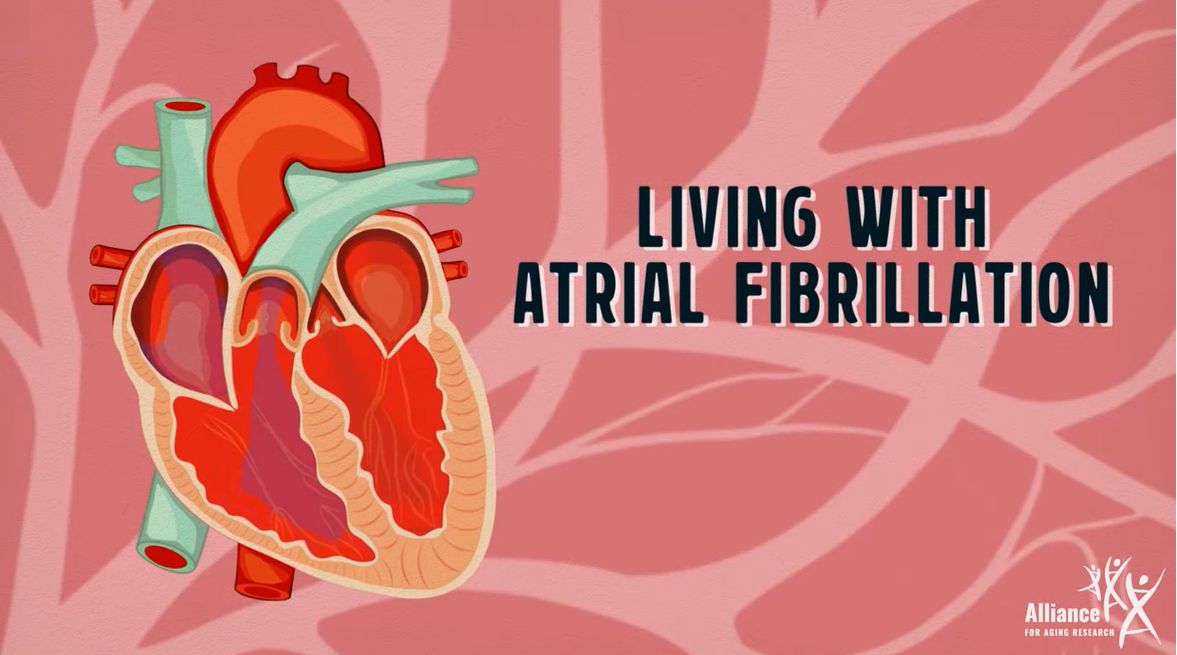Arteries—The Highways of Life: Protecting Them Against Atherosclerosis
Atherosclerotic cardiovascular diseases (ASCVD) include a range of diseases such as cerebrovascular disease, coronary heart disease, aortic atherosclerosis, and peripheral…
more.Published March 8, 2018
Atrial fibrillation, also known as AFib, is the most common type of arrhythmia, or irregular heartbeat. An estimated 5 million Americans are currently living with AFib, and it becomes more common with age. AFib significantly increases a person’s risk of stroke, so it’s important to recognize its signs and symptoms and to seek treatment to reduce risk. However, it’s important to keep in mind that some people with AFib never experience symptoms, and are diagnosed when a health care professional detects an irregular heartbeat during a routine exam or during a visit for another health condition. Watch this short film to learn about the risk factors, causes, symptoms, and treatment options of AFib.
Also watch Preventing Stroke from AFib to learn more about the risk of stroke in AFib.

Atherosclerotic cardiovascular diseases (ASCVD) include a range of diseases such as cerebrovascular disease, coronary heart disease, aortic atherosclerosis, and peripheral…
more.
Atrial fibrillation (AFib) is one of the most common types of arrhythmias—or irregular heartbeats—and causes the heart to…
more.
Atrial fibrillation (AFib) is one of the most common types of arrhythmias—or irregular heartbeats—and causes the heart to…
more.This campaign shares the real stories of people who have experienced and seen first-hand how serious strokes can be. These advocates all share the mission of educating patients and their loved ones about stroke risk and prevention, so that they can Celebrate a Year Without a Stroke.